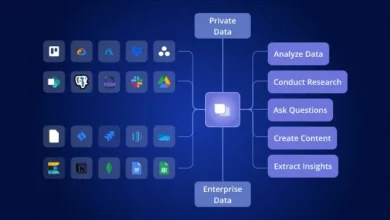3 Innovations in Audio for Game Development

Audio plays a crucial role in elevating the immersion and overall gaming experience. It adds depth, atmosphere, and emotional resonance to gameplay, making it an indispensable aspect of modern video games.
With advancements in audio technology, game developers can now create more realistic soundscapes, dynamic sound effects, and immersive soundtracks, enriching players’ gaming experience.
From the subtle rustle of leaves to epic orchestral scores, audio enhances every moment, drawing players deeper into the game world. In this introduction, we will explore the significance of audio in gaming and how technological innovations continue to shape and enhance the audio landscape of video games.
Contents
3 Innovations in Audio Tech for Game Development
1. Spatial Audio and 3D Soundscapes
Spatial audio refers to the technique of creating a three-dimensional auditory environment within a game. It allows players to perceive sound as coming from different directions and distances. Spatial audio simulates the way sound waves interact with the environment, providing a more immersive and realistic audio experience for players.
With spatial audio, game developers can replicate the sensation of sound sources moving around the player, creating a sense of depth and presence in the virtual world.
Technology:
Spatial audio is achieved through various techniques, including ambisonics and binaural audio. Ambisonics involves capturing and reproducing sound in a spherical coordinate system, allowing for accurate spatial positioning of audio sources. Binaural audio simulates the natural hearing process by recording sound with two microphones placed in the ears of a dummy head. This technique creates a convincing illusion of sound localization and movement, especially when using headphones.
Impact on Gaming:
Games that effectively utilize spatial audio can significantly enhance gameplay and player immersion. For example, players can accurately locate enemy footsteps or gunfire in a first-person shooter, providing tactical advantages. Spatial audio can also create a more realistic and atmospheric environment in open-world exploration games, with sounds reflecting the surrounding terrain and weather conditions.
Titles like Hellblade: Senua’s Sacrifice and The Last of Us Part II demonstrate the immersive potential of spatial audio, earning acclaim for their audio design and enhancing players’ overall gaming experience.
2. Dynamic and Adaptive Audio
Dynamic and adaptive audio refers to game sound systems that adjust in real time based on various factors, such as player actions, environmental changes, and narrative progression.
Unlike static audio, which remains constant throughout gameplay, dynamic audio evolves dynamically to match the evolving game state, enhancing immersion and player engagement.
Implementation Methods:
Game developers employ middleware solutions like FMOD and Wwise to implement dynamic and adaptive audio in their games.
These tools provide sophisticated audio engines and authoring environments that allow designers to create complex audio behaviours and trigger conditions based on specific in-game events or parameters.
Benefits:
Dynamic and adaptive audio offers several advantages for both players and developers. Firstly, it enhances immersion by creating a more responsive and realistic game environment, where sound cues dynamically reflect the player’s actions and surroundings.
This heightened immersion contributes to a more engaging gameplay experience and helps maintain player interest over extended play sessions. Additionally, dynamic audio can serve gameplay functions by providing auditory feedback on critical game events or signalling changes in the game state, aiding player comprehension and decision-making.
Also, adaptive audio adds depth and richness to a game’s audio landscape, allowing for greater diversity and complexity in soundscapes and musical compositions. The use of dynamic and adaptive audio techniques contributes to the overall polish and quality of a game’s audio design, enhancing its appeal to players and reflecting positively on the iGaming software provider service’s brand and reputation.
3. Procedural Audio Generation
Procedural audio generation involves using algorithms to dynamically create sound effects and music in real-time within a game environment rather than relying on pre-recorded audio assets.
Leveraging mathematical formulas and rules, procedural audio systems can generate an infinite variety of sounds, adapting to the player’s actions and the game’s context. This allows for a more dynamic, immersive audio experience that enhances gameplay and immersion.
Advantages:
Procedural audio offers several advantages over traditional audio techniques. First, it can significantly reduce a game’s storage requirements by generating audio content on the fly, eliminating the need for large libraries of pre-recorded sound files.
This can result in smaller download sizes and faster loading times, which is particularly important for mobile and online games. Additionally, procedural audio enables developers to create unique and personalized audio experiences for each player, as sound effects can be tailored based on individual gameplay choices and preferences.
This dynamic approach to audio generation adds depth and richness to the game world, enhancing immersion and replay value.
Challenges and Examples:
Implementing procedural audio comes with its own set of challenges. Designing practical procedural audio algorithms requires a deep understanding of sound synthesis techniques and signal processing, which can be complex and time-consuming to develop. Furthermore, ensuring that procedurally generated sounds seamlessly integrate with the game’s visuals and gameplay mechanics can be a technical challenge.
Despite these hurdles, several games have successfully implemented procedural audio significantly. For example, “Spelunky” uses procedural audio to generate dynamic soundscapes that react to the player’s movements and interactions, enhancing the game’s sense of exploration and discovery.
Similarly, “No Man’s Sky” employs procedural audio to create a vast and diverse universe filled with unique soundscapes, contributing to the game’s immersive and atmospheric experience. These examples demonstrate the potential of procedural audio to revolutionize the way games are experienced and enjoyed by players.
Conclusion
Audio enhances the gaming experience, offers immersion, and enriches gameplay. Spatial audio creates 3D environments, while dynamic and adaptive audio responds to player actions, elevating engagement.
Procedural audio generation presents opportunities for unique and personalized experiences. Understanding these audio strategies allows game source code providers to create more captivating games.
Embracing these techniques fosters innovation and ensures games remain competitive and appealing to players. As technology continues to evolve, the importance of audio in gaming will only grow, shaping the future of interactive entertainment.



